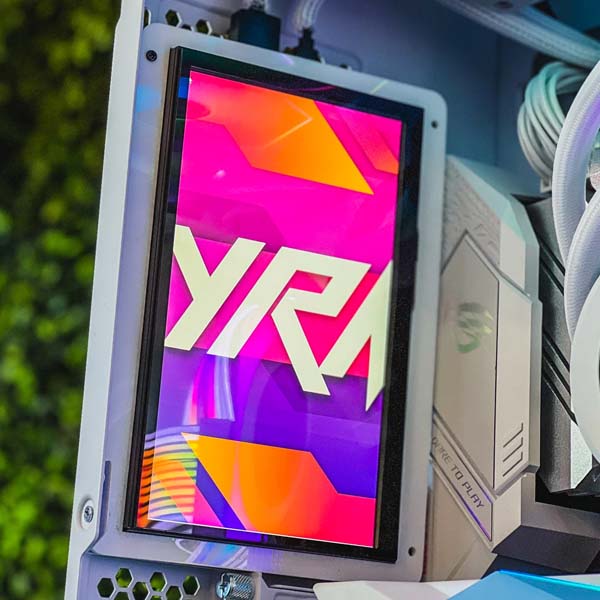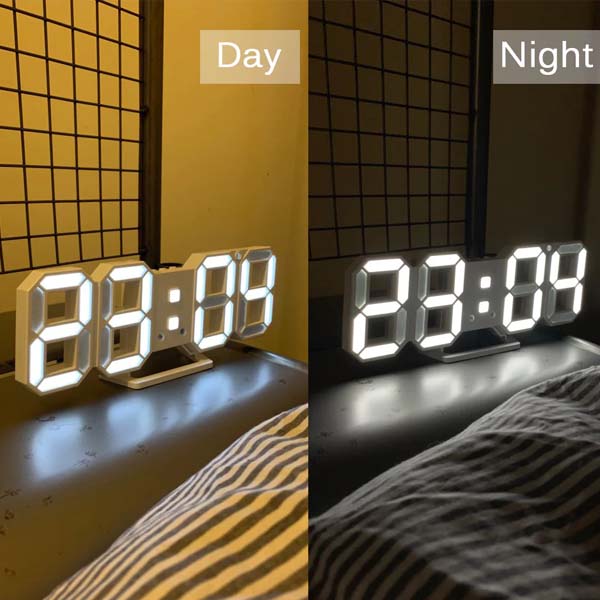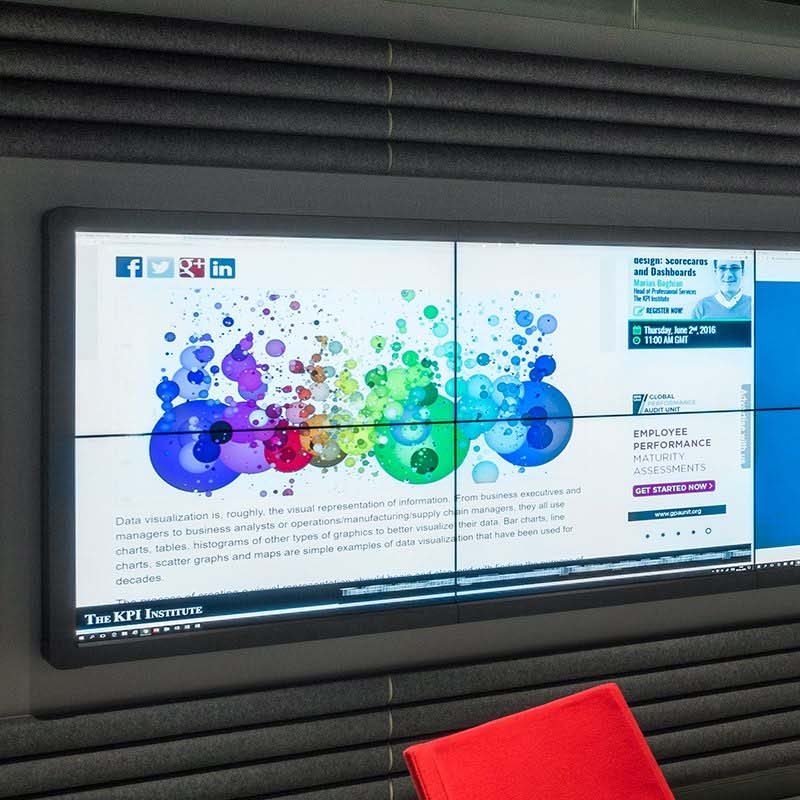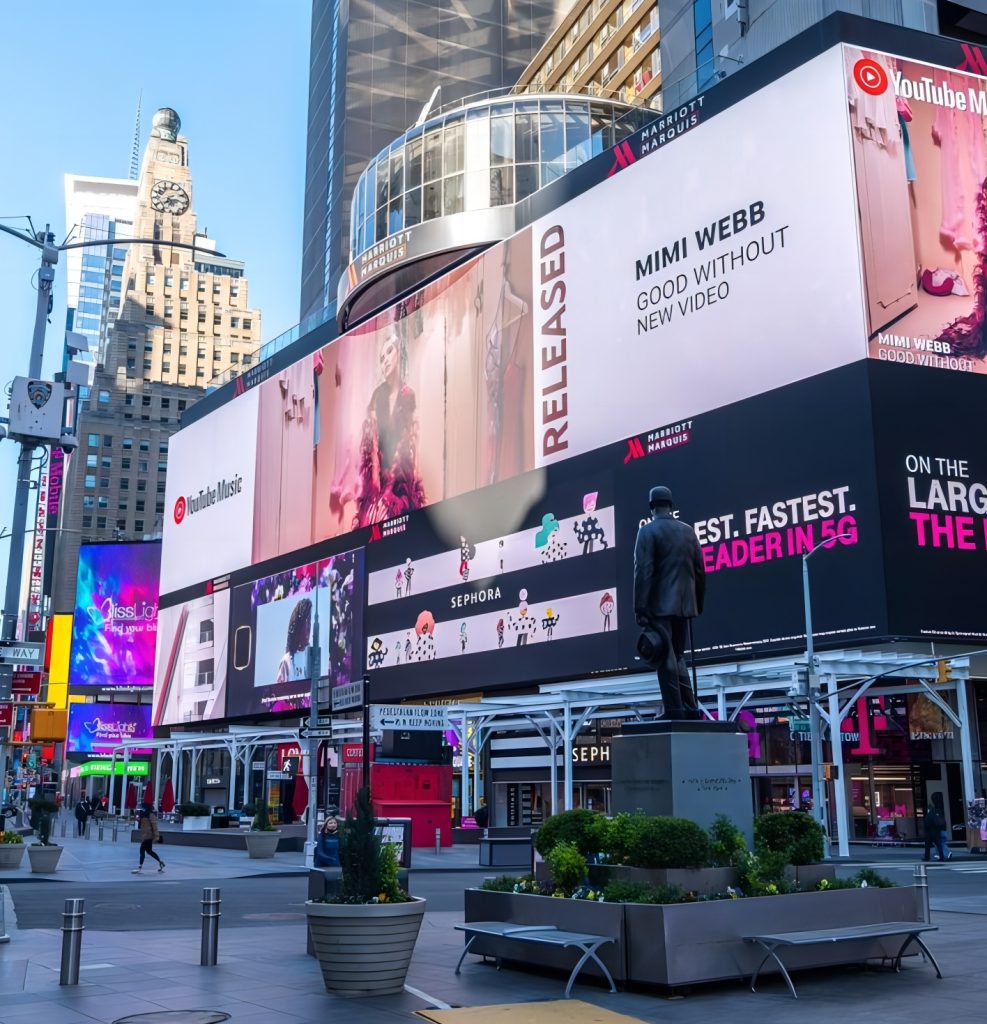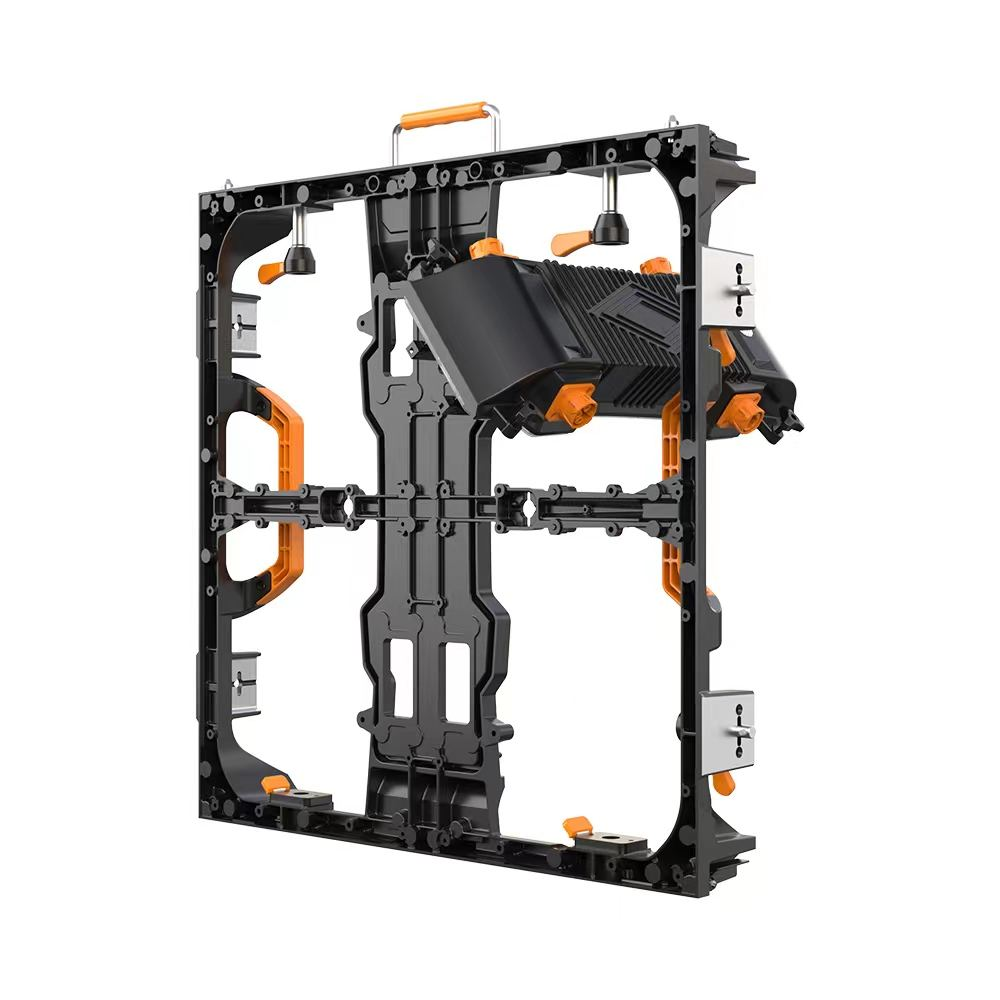From high-traffic public spaces to premium commercial environments, LED digital signage continues to redefine modern communication through its perfect blend of form and function. Let’s explore how to select and optimize these powerful communication tools for your specific needs
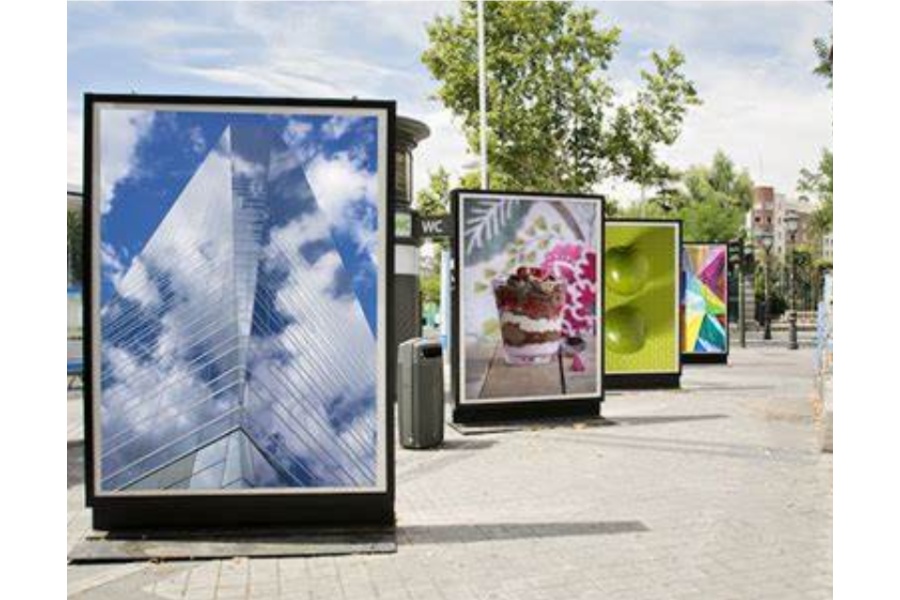
What is an LED Digital Signage Display?
An LED digital signage display is an electronic device that utilizes the self – illuminating properties of light – emitting diodes (LEDs) to showcase images and text. Its basic components include an LED lamp – bead array, a drive circuit, a control system, and an enclosure. The LED lamp beads are the core light – emitting elements. By converting electrical energy into light, they present rich colors and high – brightness visuals. The drive circuit precisely regulates the current and illumination state of each lamp bead, ensuring stable and accurate image display. The control system is responsible for receiving and processing signals from external devices (such as computers and servers), enabling content updates and switching. The robust enclosure protects the internal components and optimizes heat dissipation, ensuring the device operates stably in various environments.
Core Advantages of LED Digital Signage Displays
Ultra – high Brightness and Wide Color Gamut: The self – illuminating nature of LED lamp beads endows the display with ultra – high brightness. Outdoor models can achieve a brightness of over 5000 cd/㎡, ensuring clear visibility even under direct sunlight. Additionally, it has a broad color gamut, capable of presenting more than 110% NTSC of rich colors. Whether it’s a vibrant advertising poster or a detailed video, it can reproduce colors realistically, delivering a stunning visual impact.
Long Lifespan and Low Maintenance: LED lamp beads have a theoretical lifespan of over 100,000 hours, significantly reducing the replacement frequency compared to traditional display devices. With a modular design, when some components malfunction, the modules can be easily replaced, effectively cutting down on maintenance costs and time, and ensuring continuous and stable information display.
Flexible Splicing and Custom – shaped Tailoring: It supports seamless splicing technology, allowing multiple displays to be combined into an extra – large – sized screen as needed, from a small display area of a few square meters to a giant advertising curtain wall of thousands of square meters. It can also be customized into special shapes like curved, spherical, or cylindrical forms, meeting the display requirements of creative spaces and unique scenarios.
Intelligent Interaction and Remote Management: Some LED digital signage displays integrate capacitive touch, infrared sensing, or gesture – recognition technologies. Users can interact with the screen through touch, gestures, etc., to access information and participate in activities. Meanwhile, with network connectivity and professional management software, functions such as remote content updates, power – on/off, and brightness adjustment can be controlled, breaking through geographical limitations and enabling efficient and convenient management.
Application Scenarios of LED Digital Signage Displays
Commercial Advertising: In shopping malls, commercial streets, and shopping centers, it serves as the mainstay of advertising displays, attracting consumers with its vivid dynamic images and showcasing new products, promotions, brand images, etc., enhancing brand awareness and product sales. It is also commonly used in window displays. When combined with transparent LED technology, it achieves an integrated presentation of products and advertisements, increasing attractiveness.
Transportation Hubs: In airports, railway stations, bus stations, and subway stations, it displays real – time flight and train information, waiting reminders, and traffic guidance, facilitating passengers’ travel. Outdoor LED displays on highways release traffic conditions, weather warnings, and safety tips, ensuring smooth and safe traffic flow.
Public Services: In hospitals, it shows department layouts, doctor introductions, and treatment procedures. In banks, it is used for business promotion, interest rate display, and queuing number calling. In government service halls, it publicizes policies, regulations, service guidelines, and announcements, improving service efficiency and transparency.
Cultural and Education: In school classrooms and auditoriums, it is used for teaching demonstrations and campus activity promotion. In science and technology museums, museums, and exhibition halls, it vividly presents exhibit knowledge and historical culture in combination with interactive technologies, enhancing visitors’ sense of experience and participation.
Entertainment Venues: In cinemas, it plays movie previews and screening schedules. In bars, KTVs, etc., it showcases music videos and beverage recommendations. At concert and sports event venues, it provides stage backgrounds, live score broadcasts, and highlight replays, creating a lively atmosphere.
Precautions for Using LED Digital Signage Displays
Installation Environment: For outdoor installation, ensure good waterproof, dust – proof, and anti – corrosion performance, reaching an IP65 protection level or above. For indoor installation, choose a well – ventilated area away from heat sources and humidity to avoid shortening the device’s lifespan or causing malfunctions due to environmental factors.
Power Management: Use a stable power supply equipped with a voltage – stabilizing device and a UPS uninterruptible power supply to prevent damage to the device from voltage fluctuations and power outages. Avoid frequent power – on and off to reduce current surges.
Daily Maintenance: Regularly check the screen surface for stains or damage, and gently wipe it with a special cleaning agent and a soft cloth. Check if the cooling fan is operating properly and clean the internal dust. Regularly check if there are system software updates to maintain the device’s stable performance.
Key Factors for Selecting LED Digital Signage Displays
Pixel Pitch: Select appropriately according to the viewing distance. For close – range viewing (1 – 3 meters), such as in indoor exhibition halls and conference rooms, it is recommended to choose small – pitch products with P1.2 – P2.5 for a delicate and grain – free image. For long – range viewing (over 10 meters), like in outdoor advertising and large squares, consider displays with a pitch of P6 – P10 to balance cost and display effect.
Brightness and Contrast: For indoor scenarios, a brightness of 800 – 1500 cd/㎡ suffices. For outdoor scenarios, a brightness of over 3000 cd/㎡ is required to cope with strong – light environments. The higher the contrast, the stronger the sense of picture hierarchy. It is advisable to choose products with a static contrast of 5000:1 or above.
Refresh Rate: For scenarios involving the playback of dynamic content such as videos and animations or with interactive requirements, a high refresh rate (e.g., 120Hz, 144Hz) can reduce picture lag and ghosting, enhancing visual smoothness.
Interactive Function: If there is an interactive need, clarify the required interaction method. Capacitive touch offers high precision, suitable for accurate operations. Infrared touch supports multiple – person simultaneous operation. Gesture recognition and somatosensory interaction provide a contact – free interaction experience. Choose the technology that suits the scenario.
System Compatibility: Ensure the display is compatible with the existing content management system and control devices, supports common video, picture, and document formats for easy content production and transmission, and supports network connectivity for convenient remote management and updates.
Brand and After – sales Service: Prioritize well – known brands, which have more advantages in terms of technology research and development, product quality, and color calibration. Also, pay attention to after – sales service, such as the warranty period, after – sales response time, and whether on – site maintenance is provided, to ensure worry – free use.
Suppliers of LED Digital Signage Displays
As a professional manufacturer with years of experience in the display field, KSSDISPLAY focuses on the R & D, production, and sales of LED digital signage displays. With its strong technical strength, strict quality control, and comprehensive service system, it has created a full range of high – quality products covering indoor and outdoor digital signage displays of different sizes and functions. It has provided customized display solutions for over 2000 enterprises and projects worldwide and has won widespread acclaim. If you have product inquiries, solution customization needs, or procurement requirements, feel free to contact the KSSDISPLAY team at any time. We will be happy to serve you!
Unlocking LED Digital Signage Displays: Ushering in a New Era of Efficient Information Dissemination
In the era of digital transformation, the methods of information dissemination are constantly evolving. LED digital signage displays, with their outstanding performance and unique advantages, have become the ideal choice for information delivery in numerous scenarios. From street advertisements in bustling metropolises to intelligent navigation in high – end office buildings, from promotional displays in lively shopping malls to real – time information release at transportation hubs, they are omnipresent, attracting attention with their eye – catching appearance and accurately conveying crucial information. Now, let’s delve into LED digital signage displays and explore their purchasing essentials and diverse allure.
What is an LED Digital Signage Display?
An LED digital signage display is an electronic device that utilizes the self – illuminating properties of light – emitting diodes (LEDs) to showcase images and text. Its basic components include an LED lamp – bead array, a drive circuit, a control system, and an enclosure. The LED lamp beads are the core light – emitting elements. By converting electrical energy into light, they present rich colors and high – brightness visuals. The drive circuit precisely regulates the current and illumination state of each lamp bead, ensuring stable and accurate image display. The control system is responsible for receiving and processing signals from external devices (such as computers and servers), enabling content updates and switching. The robust enclosure protects the internal components and optimizes heat dissipation, ensuring the device operates stably in various environments.
Core Advantages of LED Digital Signage Displays
Ultra – high Brightness and Wide Color Gamut: The self – illuminating nature of LED lamp beads endows the display with ultra – high brightness. Outdoor models can achieve a brightness of over 5000 cd/㎡, ensuring clear visibility even under direct sunlight. Additionally, it has a broad color gamut, capable of presenting more than 110% NTSC of rich colors. Whether it’s a vibrant advertising poster or a detailed video, it can reproduce colors realistically, delivering a stunning visual impact.
Long Lifespan and Low Maintenance: LED lamp beads have a theoretical lifespan of over 100,000 hours, significantly reducing the replacement frequency compared to traditional display devices. With a modular design, when some components malfunction, the modules can be easily replaced, effectively cutting down on maintenance costs and time, and ensuring continuous and stable information display.
Flexible Splicing and Custom – shaped Tailoring: It supports seamless splicing technology, allowing multiple displays to be combined into an extra – large – sized screen as needed, from a small display area of a few square meters to a giant advertising curtain wall of thousands of square meters. It can also be customized into special shapes like curved, spherical, or cylindrical forms, meeting the display requirements of creative spaces and unique scenarios.
Intelligent Interaction and Remote Management: Some LED digital signage displays integrate capacitive touch, infrared sensing, or gesture – recognition technologies. Users can interact with the screen through touch, gestures, etc., to access information and participate in activities. Meanwhile, with network connectivity and professional management software, functions such as remote content updates, power – on/off, and brightness adjustment can be controlled, breaking through geographical limitations and enabling efficient and convenient management.
Application Scenarios of LED Digital Signage Displays
Commercial Advertising: In shopping malls, commercial streets, and shopping centers, it serves as the mainstay of advertising displays, attracting consumers with its vivid dynamic images and showcasing new products, promotions, brand images, etc., enhancing brand awareness and product sales. It is also commonly used in window displays. When combined with transparent LED technology, it achieves an integrated presentation of products and advertisements, increasing attractiveness.
Transportation Hubs: In airports, railway stations, bus stations, and subway stations, it displays real – time flight and train information, waiting reminders, and traffic guidance, facilitating passengers’ travel. Outdoor LED displays on highways release traffic conditions, weather warnings, and safety tips, ensuring smooth and safe traffic flow.
Public Services: In hospitals, it shows department layouts, doctor introductions, and treatment procedures. In banks, it is used for business promotion, interest rate display, and queuing number calling. In government service halls, it publicizes policies, regulations, service guidelines, and announcements, improving service efficiency and transparency.
Cultural and Education: In school classrooms and auditoriums, it is used for teaching demonstrations and campus activity promotion. In science and technology museums, museums, and exhibition halls, it vividly presents exhibit knowledge and historical culture in combination with interactive technologies, enhancing visitors’ sense of experience and participation.
Entertainment Venues: In cinemas, it plays movie previews and screening schedules. In bars, KTVs, etc., it showcases music videos and beverage recommendations. At concert and sports event venues, it provides stage backgrounds, live score broadcasts, and highlight replays, creating a lively atmosphere.
Precautions for Using LED Digital Signage Displays
Installation Environment: For outdoor installation, ensure good waterproof, dust – proof, and anti – corrosion performance, reaching an IP65 protection level or above. For indoor installation, choose a well – ventilated area away from heat sources and humidity to avoid shortening the device’s lifespan or causing malfunctions due to environmental factors.
Power Management: Use a stable power supply equipped with a voltage – stabilizing device and a UPS uninterruptible power supply to prevent damage to the device from voltage fluctuations and power outages. Avoid frequent power – on and off to reduce current surges.
Daily Maintenance: Regularly check the screen surface for stains or damage, and gently wipe it with a special cleaning agent and a soft cloth. Check if the cooling fan is operating properly and clean the internal dust. Regularly check if there are system software updates to maintain the device’s stable performance.
Key Factors for Selecting LED Digital Signage Displays
Pixel Pitch: Select appropriately according to the viewing distance. For close – range viewing (1 – 3 meters), such as in indoor exhibition halls and conference rooms, it is recommended to choose small – pitch products with P1.2 – P2.5 for a delicate and grain – free image. For long – range viewing (over 10 meters), like in outdoor advertising and large squares, consider displays with a pitch of P6 – P10 to balance cost and display effect.
Brightness and Contrast: For indoor scenarios, a brightness of 800 – 1500 cd/㎡ suffices. For outdoor scenarios, a brightness of over 3000 cd/㎡ is required to cope with strong – light environments. The higher the contrast, the stronger the sense of picture hierarchy. It is advisable to choose products with a static contrast of 5000:1 or above.
Refresh Rate: For scenarios involving the playback of dynamic content such as videos and animations or with interactive requirements, a high refresh rate (e.g., 120Hz, 144Hz) can reduce picture lag and ghosting, enhancing visual smoothness.
Interactive Function: If there is an interactive need, clarify the required interaction method. Capacitive touch offers high precision, suitable for accurate operations. Infrared touch supports multiple – person simultaneous operation. Gesture recognition and somatosensory interaction provide a contact – free interaction experience. Choose the technology that suits the scenario.
System Compatibility: Ensure the display is compatible with the existing content management system and control devices, supports common video, picture, and document formats for easy content production and transmission, and supports network connectivity for convenient remote management and updates.
Brand and After – sales Service: Prioritize well – known brands, which have more advantages in terms of technology research and development, product quality, and color calibration. Also, pay attention to after – sales service, such as the warranty period, after – sales response time, and whether on – site maintenance is provided, to ensure worry – free use.
Suppliers of LED Digital Signage Displays
As a professional manufacturer with years of experience in the display field, KSSDISPLAY focuses on the R & D, production, and sales of LED digital signage displays. With its strong technical strength, strict quality control, and comprehensive service system, it has created a full range of high – quality products covering indoor and outdoor digital signage displays of different sizes and functions. It has provided customized display solutions for over 2000 enterprises and projects worldwide and has won widespread acclaim. If you have product inquiries, solution customization needs, or procurement requirements, feel free to contact the KSSDISPLAY team at any time. We will be happy to serve you!

